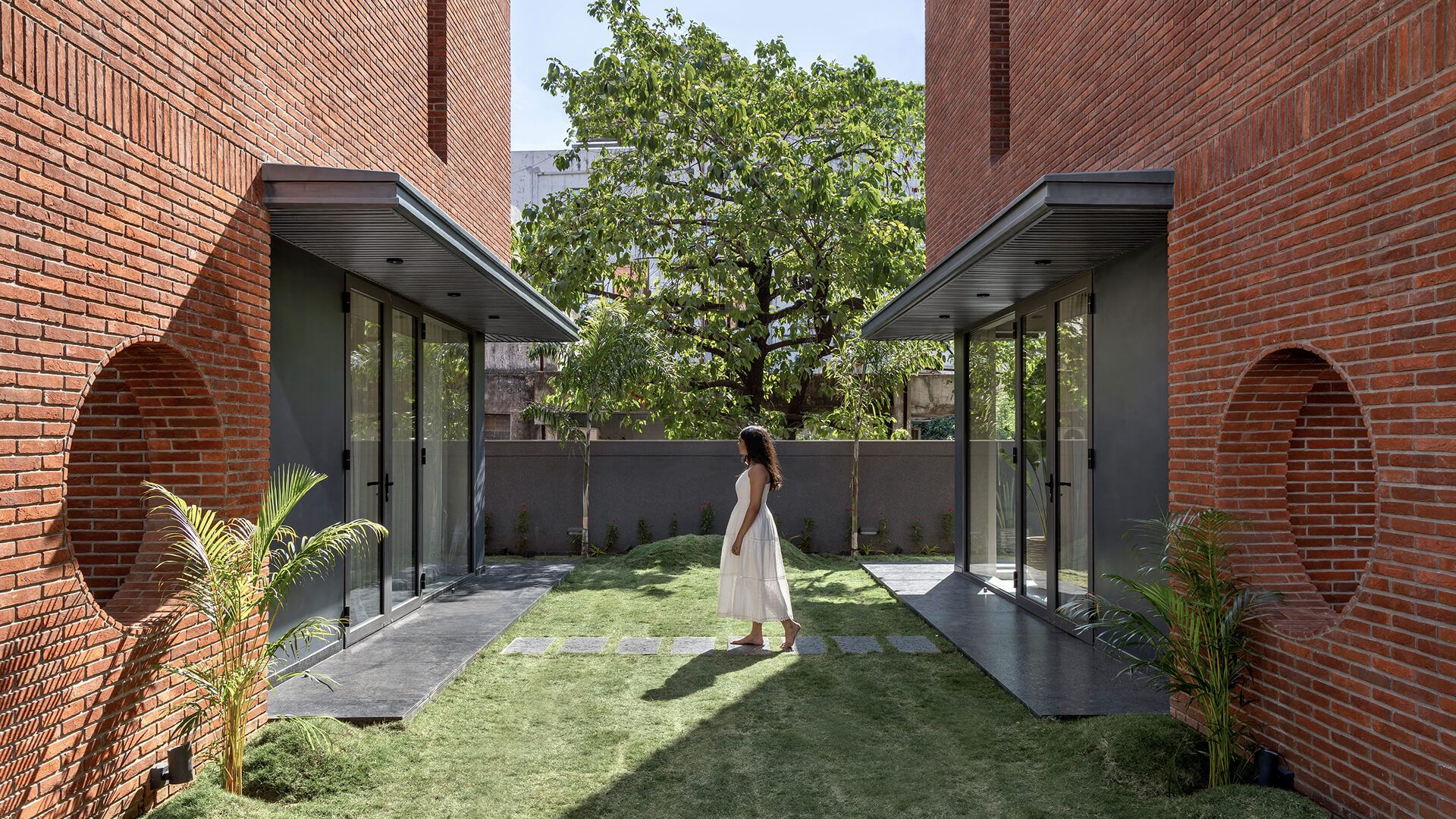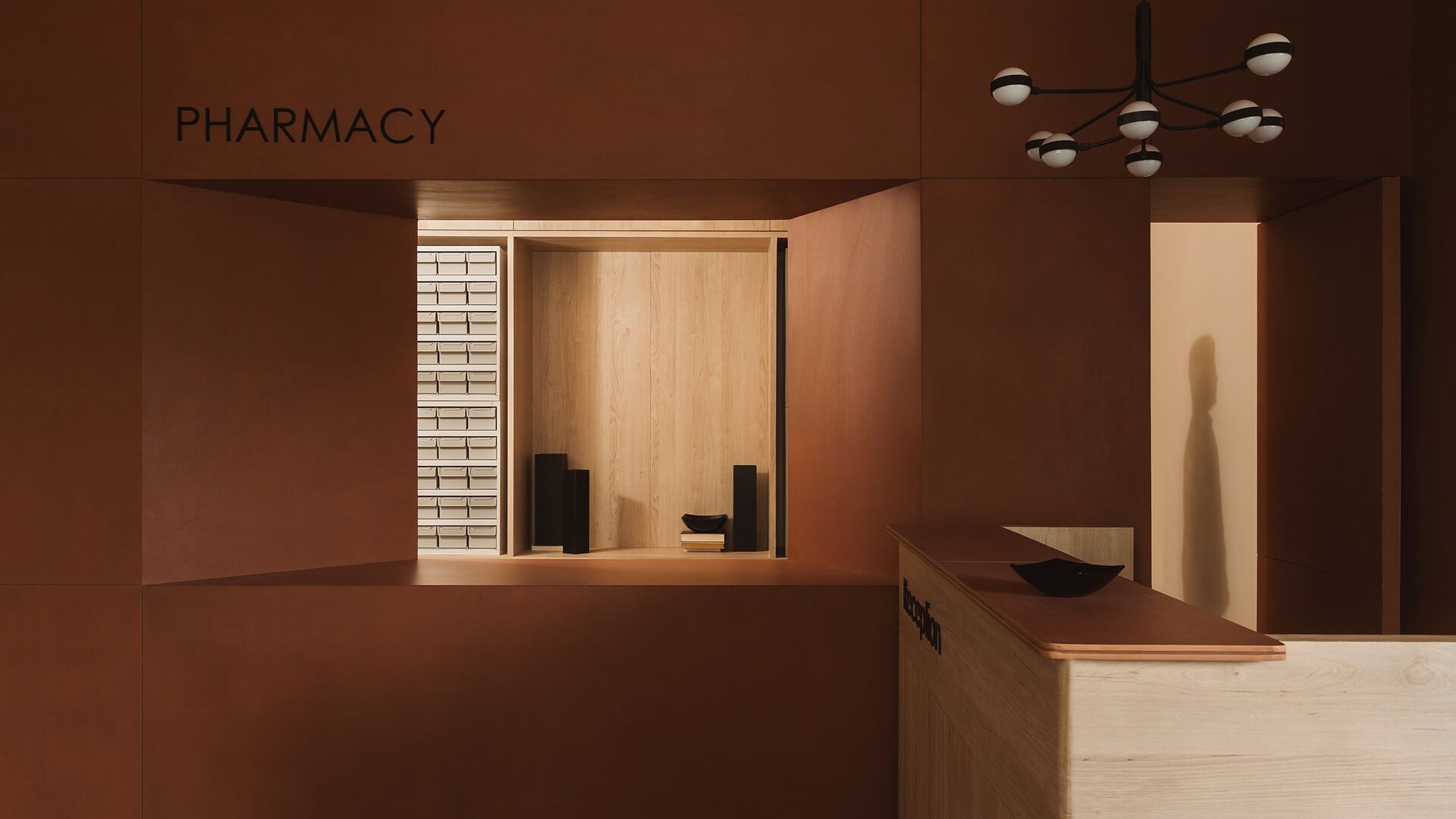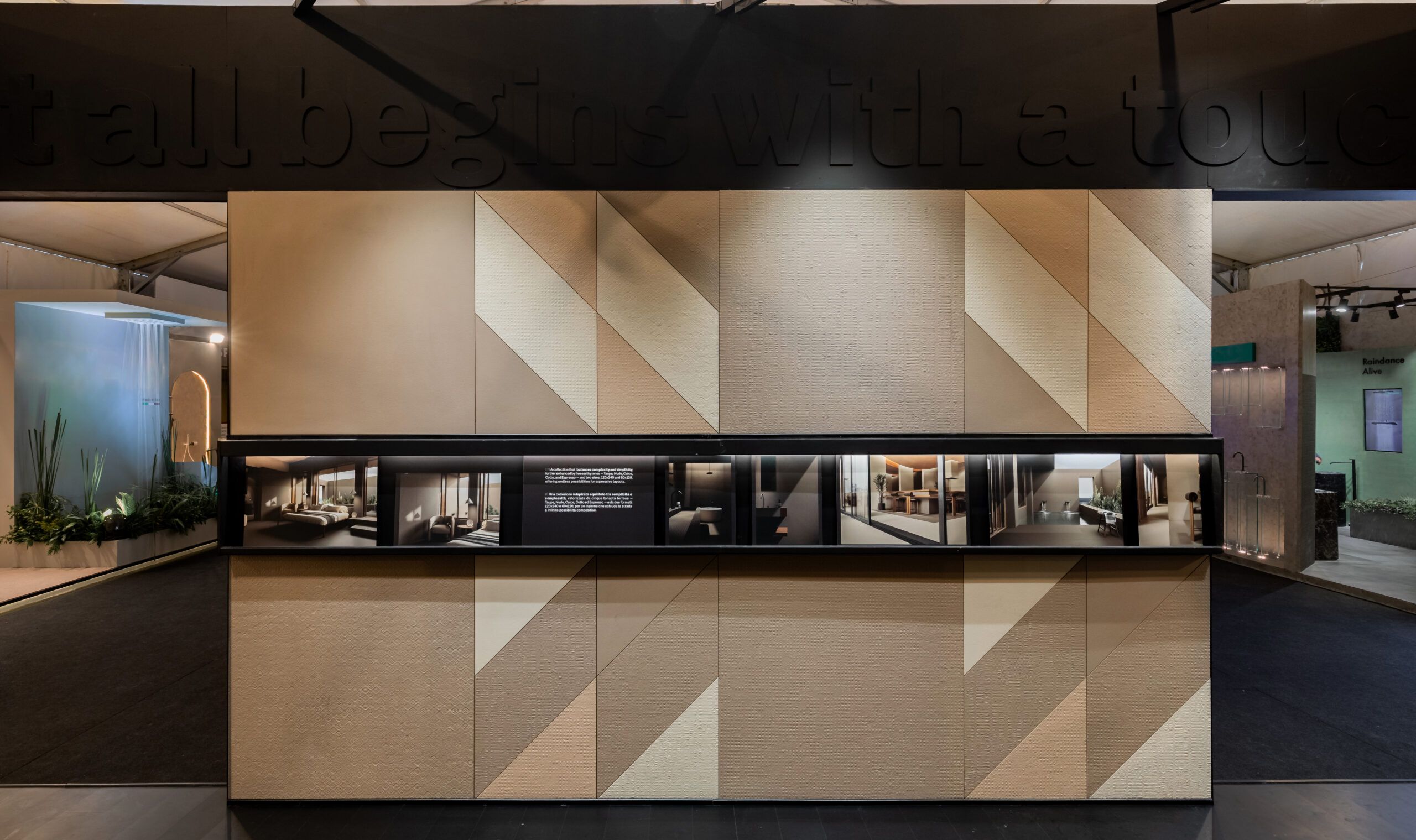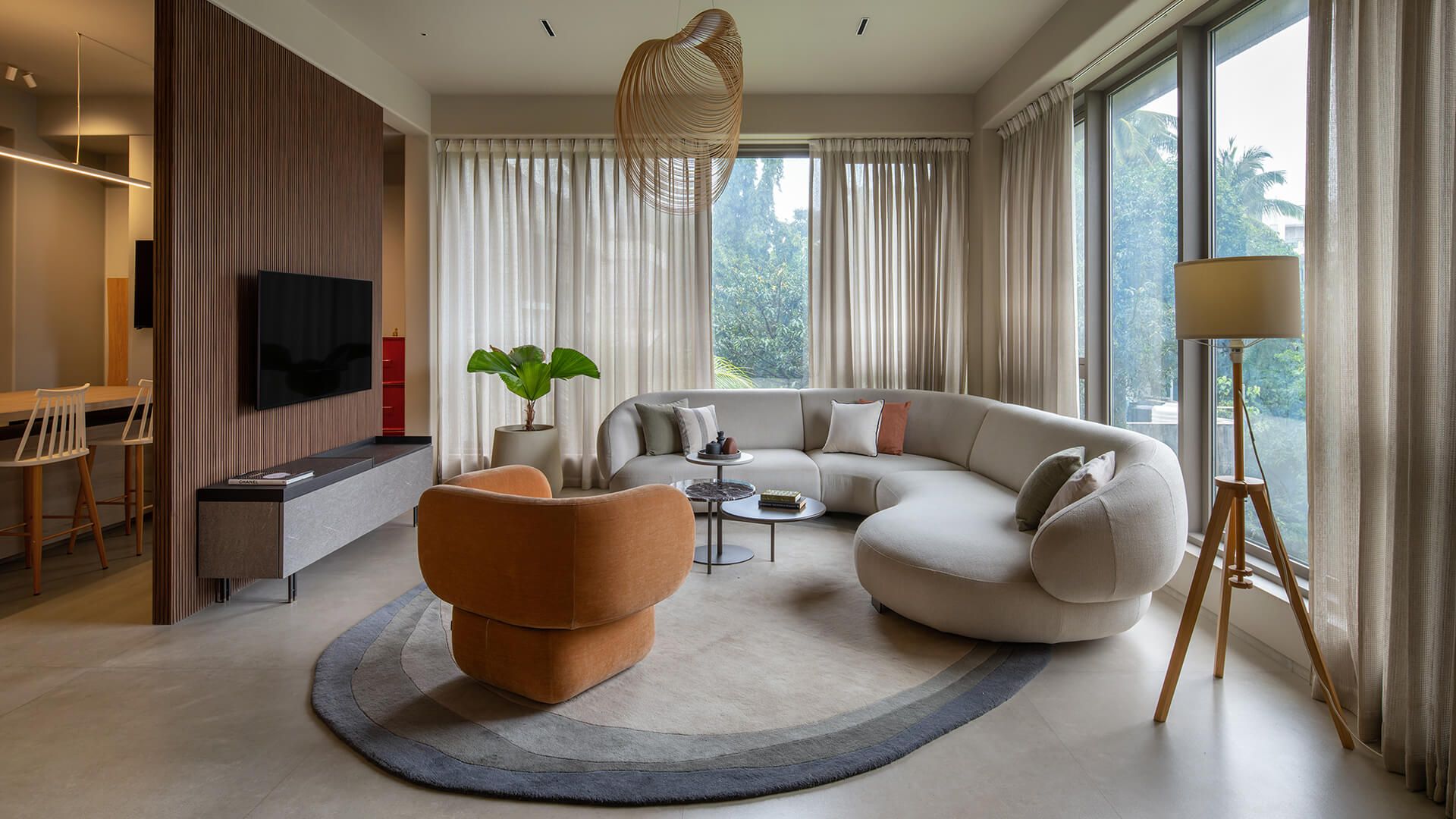This year, surfaces invite us to experience our spaces using our 5 senses.
In 2025 interior design, texture is writing the narrative: from walls clad in stone-look surfaces to monolithic countertops that double as sculptural elements, texture is no longer a background player, but the focal point.
We’re entering an era of texture and pattern drenching, a movement where visual repetition and material tactility create spaces that are immersive, expressive, and very current.
Texture and pattern drenching refers to an immersive design approach where a single pattern, motif, or material treatment is used across multiple surfaces in a room.
Instead of leveraging texture or pattern as an accent, this trend amplifies it, wrapping surfaces (walls, floors, ceilings, and even furnishings) in coordinated layers that create a cohesive environment.
This is not about over-decoration, but more so about harmony and continuity, atmosphere, and the emotional resonance of surfaces that feel as good as they look.
New textural languages
In a world increasingly shaped by screens and smooth interfaces, there’s a growing desire for surfaces that feel tangible and grounded. Textured surfaces enter the discourse, bringing a sense of authenticity and warmth, and transforming even minimalist interiors into sensory-rich environments.
Sintered surfaces, in particular, are contributing to redefine what’s possible. These advanced materials offer the look (and crucially the feel) of natural stone, raw concrete, weathered metal, or artisan plaster, with the performance to match.
In 2025, we’re seeing these surfaces used not just as floors or backsplash, but as full-wall installations, sculpted volumes, and architectural details that invite interaction.
Why texture and why now?
Pattern and texture drenching is the strategic use of a repeated motif or relief or finish across multiple surfaces in a space: think floors, walls, furniture, fixtures and beyond.
It’s a move away from the compartmentalized “feature wall” approach, embracing total surface cohesion for an enhanced visual and emotional impact.

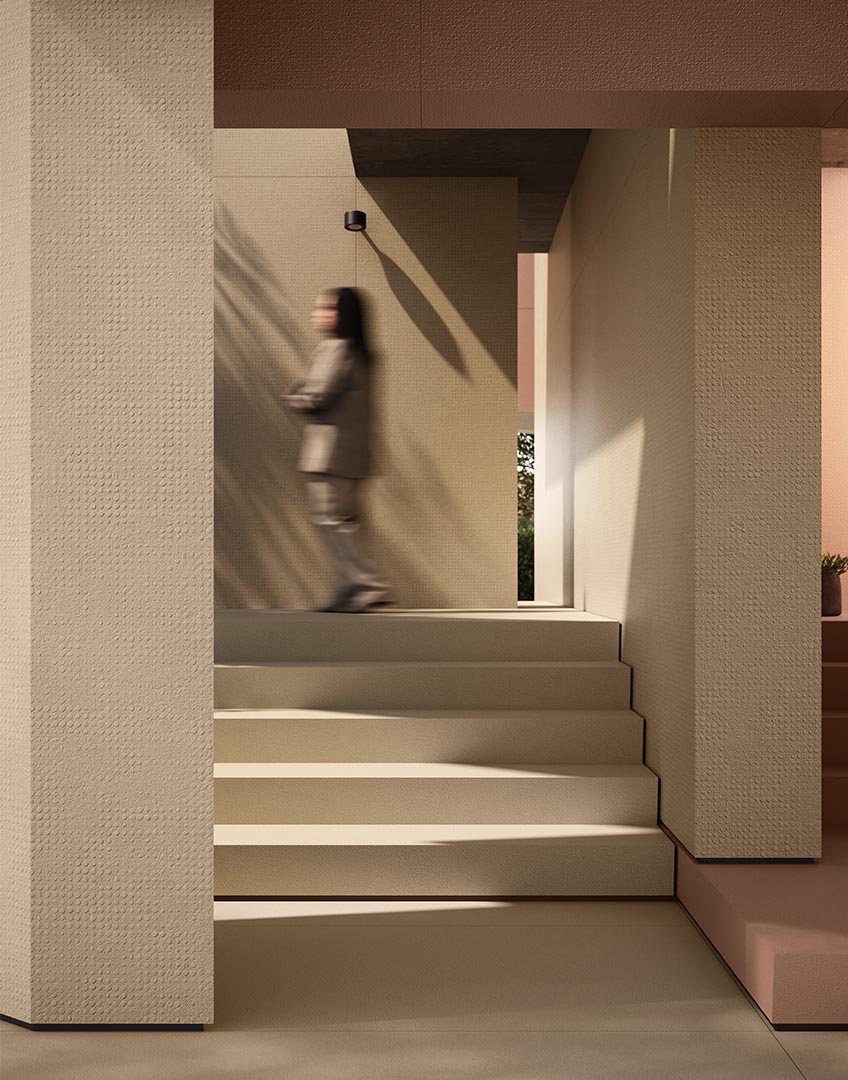
In high-end interiors, either residential or commercial, this often takes the form of:
- continuous marble-effect surfaces wrapping countertops and walls
- textured stone drenching, with stone-look slabs used floor-to-ceiling in bathrooms or wellness zones
- relief concrete-effect structures, with subtle pattern repetition across different applications.
Done right, this approach brings serenity and depth, a kind of subtle drama and visual organic elegance.
Where textures are thriving in 2025
Designers are treating walls, counters, islands, and floors as well, cladding elements like sculpture, crafting layered, tactile environments that are functional while feeling artful.
We can expect to see:
- textured wall panels in concrete effect finishes, used as architectural backdrops in living and dining rooms
- sintered countertops and islands in brushed stone or textured marble finishes, offering both elegance and practicality
- vertical installations, from fireplace surrounds to stairwells, in large-format textured slabs that emphasize volumes, dimensions and continuity
- integrated cabinetry cladding with matching surface textures, for a seamless material narrative
These choices are not just aesthetic: they invite connection and offer a sensory grounding in our 2025 fast-paced world.
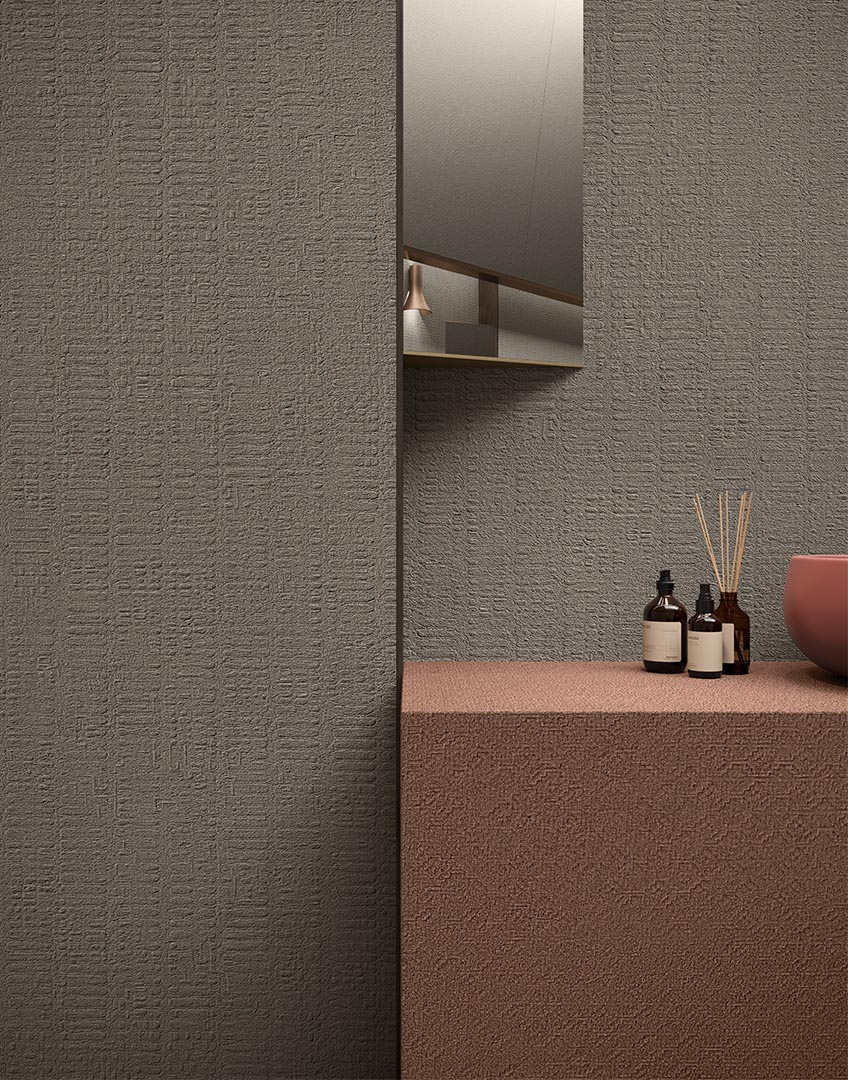
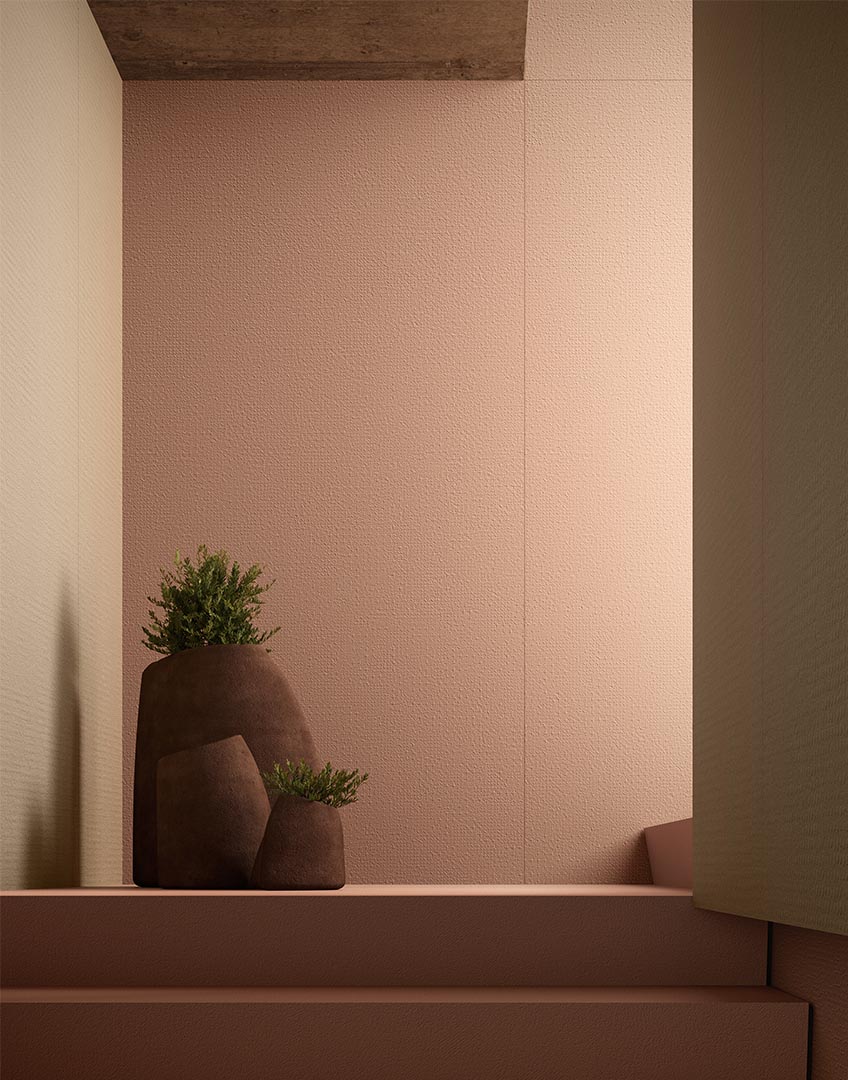
The contemporary surface is sintered
The rise of texture-heavy design has gone hand-in-hand with the evolution of sintered stone technology.
Offering unmatched durability, low maintenance, and high aesthetic fidelity, sintered surfaces have become in time the material of choice for architects and designers pushing the boundaries of texture and pattern repetition.
Whether emulating deeply veined marble, or industrial textured concrete, sintered materials provide the design freedom to explore pattern and texture without compromise.
A mission in surface innovation
Nexion surfaces offer a wide range of unique tactile and visual experiences, from the high-gloss and maximum light reflection to softly textured minimalism, and from subtle linear reliefs to 3D carved stone-like effects.
Together, these finishes contribute to the creation of a new chapter in interior surface design: one where texture becomes a defining element of architectural expression.
These surface textures are applied to a wide variety of designs and collections, ranging from the concrete-effect of RIGA, Planum, Ombre and Picché, all the way to the stone-look surfaces of Lithic, and the lifelike wood-effect of the Coniwood and Essenze collection.
What comes next
As we move further into 2025, the message is becoming clearer: design is shifting towards a more tactile, more immersive approach.
Texture and pattern aren’t just visual tools, they’re a means to connect with the spaces we inhabit.
With sintered surfaces at the forefront, designers are embracing a new kind of material storytelling: one where texture defines space, and repetition becomes art.
Discover the new collection Ombre, a celebration of pattern, texture and light interplays.
